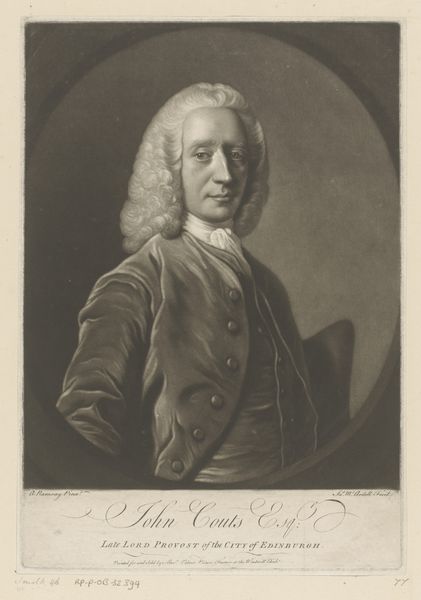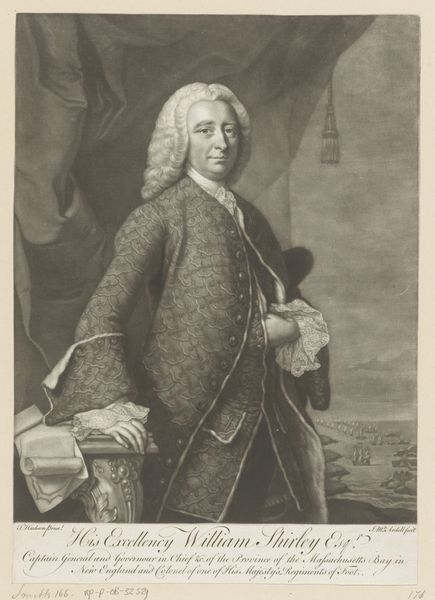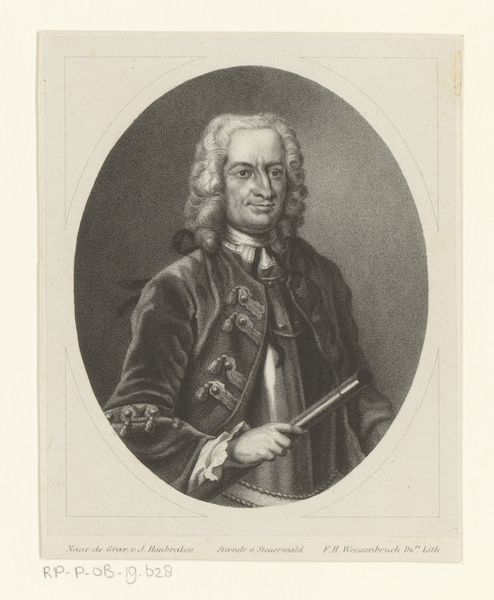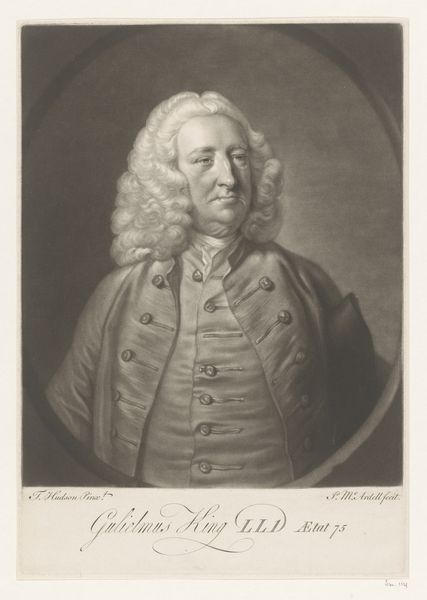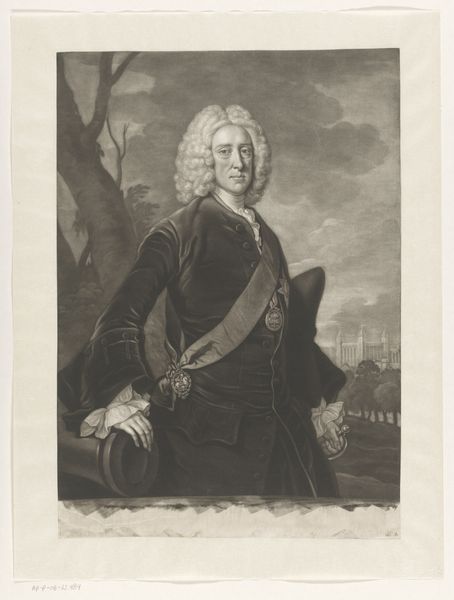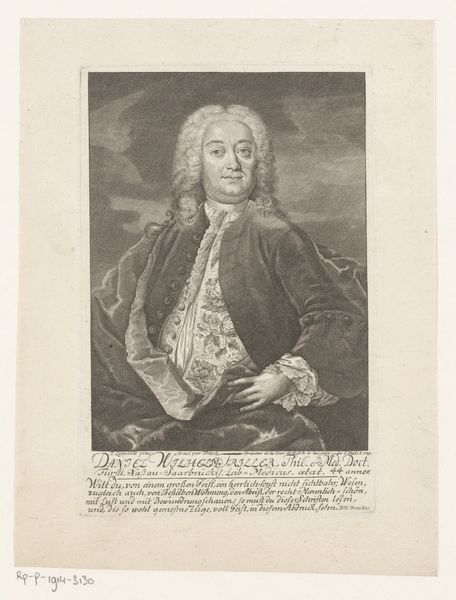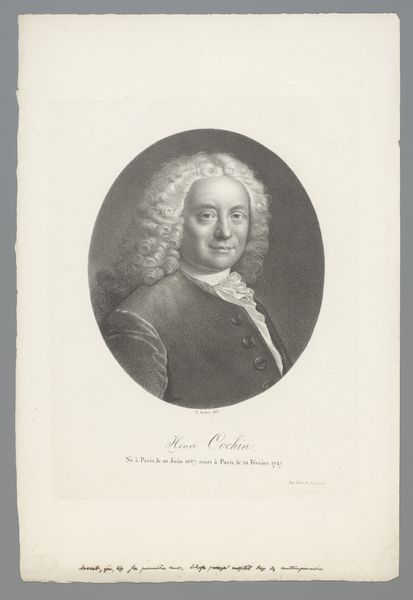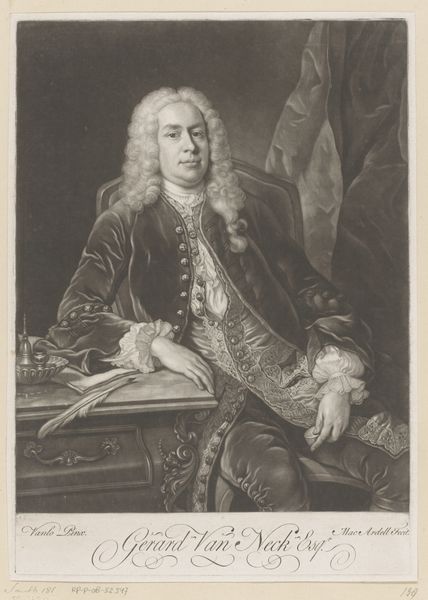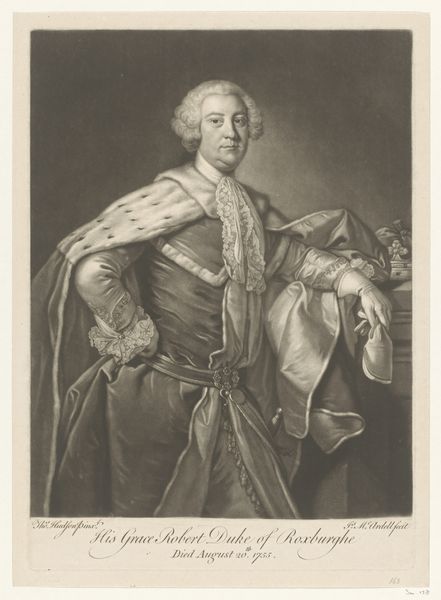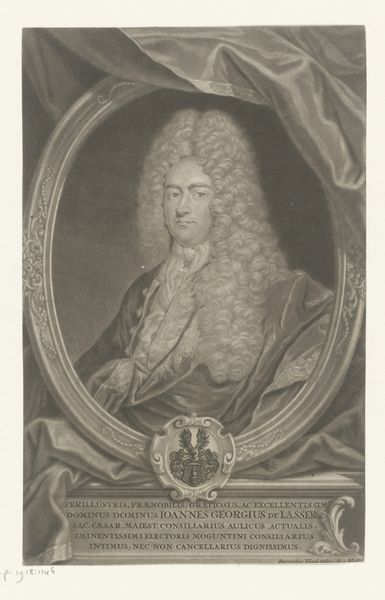
print, engraving
#
portrait
#
baroque
# print
#
history-painting
#
engraving
Dimensions: height 325 mm, width 225 mm
Copyright: Rijks Museum: Open Domain
Curator: Ah, here we have a print titled "Portret van Stephen Poyntz," created between 1700 and 1756 by John (II) Faber. It's an engraving. Editor: The instant draw is the ornate dress. Each button looks like an explosion of fabric. How conscious do you think Mr. Poyntz was about projecting a specific image? Curator: Given the time period, highly conscious! This portrait, while technically a print, participates in a broader visual culture that served to solidify social hierarchies. Prints like these circulated amongst the elite. Faber's choice to work in engraving, known for its sharp detail, underscores the importance of accuracy and likeness in affirming identity. Editor: There's almost a theatrical element to the whole composition. The wig, the gaze, the slightly tilted posture all come together to convey status, definitely. What was the artistic environment like back then, during its creation, that influenced portraits such as this one? Curator: Portraits in the Baroque era often functioned as tools of state and instruments of family prestige. Artists like Faber were deeply involved in these complex power dynamics, commissioned to create idealized but recognizable likenesses of the wealthy and powerful. These prints offered broader access to their image and identity. Editor: Do you see it working on more than one level? As in, would its importance shift based on the audience viewing it? Curator: Absolutely. For those within Poyntz’s immediate social circle, the print reaffirmed their shared values and status. For those outside, it could inspire aspiration or, perhaps, resentment. The circulation of these images was a controlled form of publicity. Editor: And now, we have it hanging here! That time warp of intention to impact, fascinating! It makes you think about images nowadays and how differently they operate, doesn't it? Curator: It does, doesn't it? Reflecting on this artwork highlights the ongoing negotiations surrounding visual representation and power. Thanks for chatting about it with me.
Comments
No comments
Be the first to comment and join the conversation on the ultimate creative platform.

